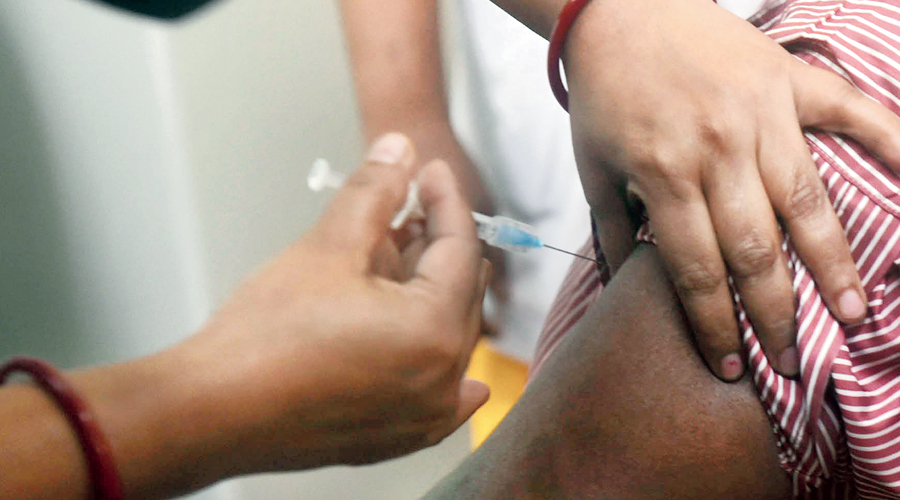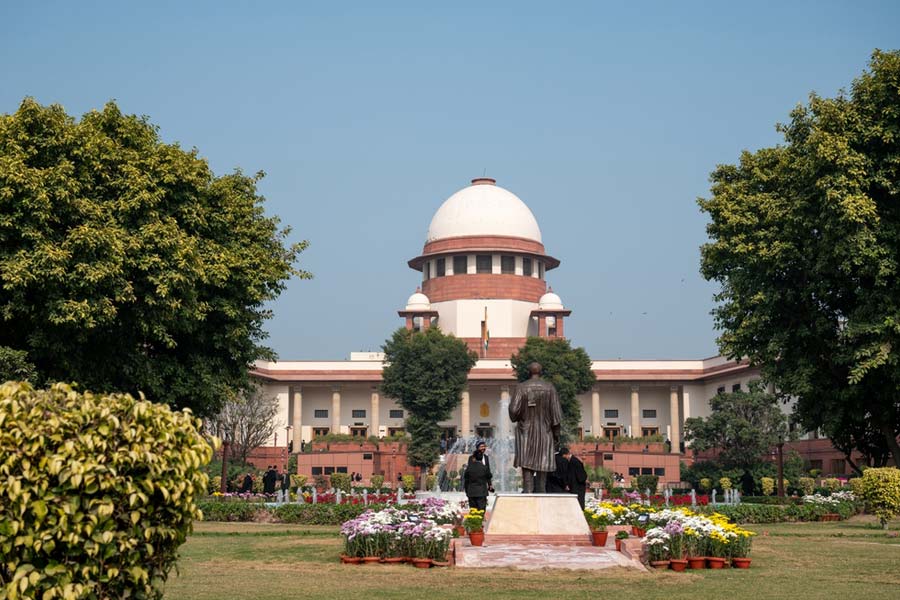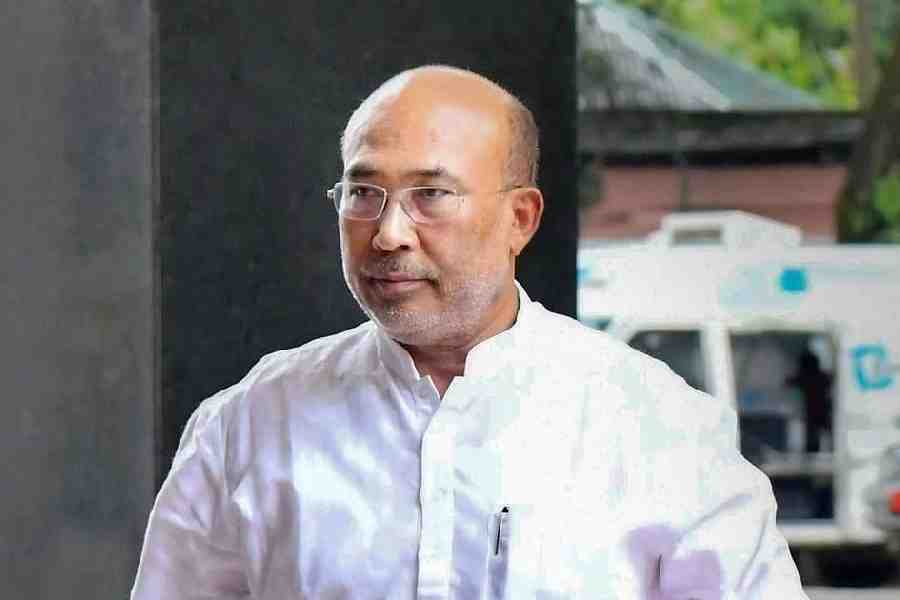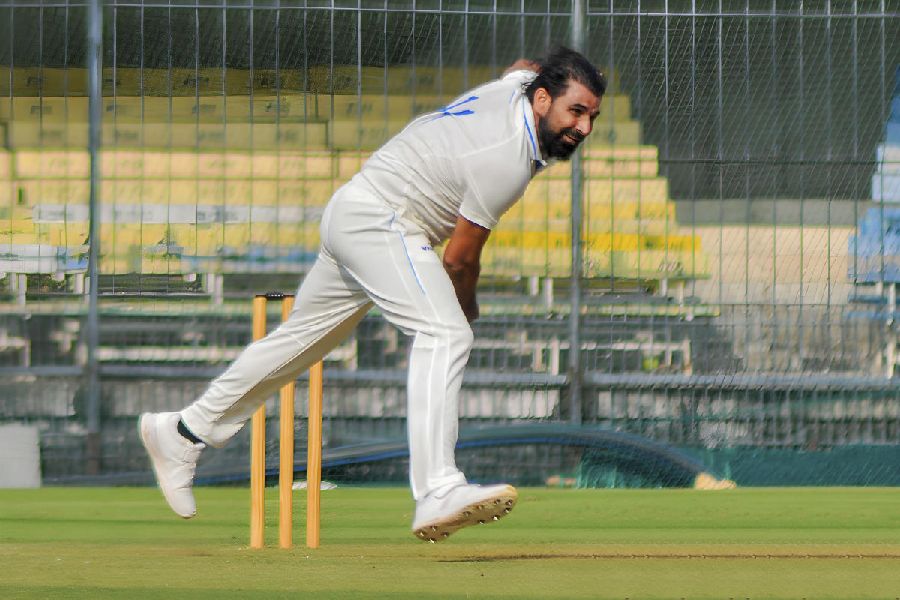Poor turnouts have dogged India’s Covid-19 vaccination campaign that has inoculated nearly 787,000 healthcare workers, but this is little more than half of the targeted beneficiaries to be covered in the five days since its start.
The Union health ministry said 786,842 people had been vaccinated till 6pm on Wednesday through 14,119 vaccination sessions since January 16, but the ministry’s guidelines had proposed 100 beneficiaries per session — or over 1.41 million should have received the vaccinations by now.
Twenty states organised vaccination sessions on Wednesday through around 2,400 sites which under the guidelines should have vaccinated around 240,000 people, but the actual number of vaccinations were 112,007 up to 6pm — or 45 per cent of the ideal number.
Health officials and sections of potential beneficiaries believe that vaccine hesitancy is contributing to the lower-than-expected turnouts, particularly among sections of doctors who have questioned the use of one vaccine without proven efficacy data.
The campaign is relying on two vaccines — Covishield, the AstraZeneca-Oxford product made in India by the Serum Institute of India, and Covaxin, a homegrown vaccine from Bharat Biotech. Some doctors have expressed hesitance over Covaxin because its efficacy is still under evaluation.
But even healthcare workers expected to receive Covishield have failed to turn up. At the King Edward Memorial Hospital, Mumbai, on Tuesday, the campaign staff had to invite healthcare workers who were not scheduled to take the vaccine that day because those on the list did not arrive.
Amid the poor turnouts, the Centre has tweaked the digital platform deployed for the campaign to enable it to accept additional, non-scheduled beneficiaries from a list of pre-registered beneficiaries who may not be scheduled for a specific day.
“This is being done to allow maximum possible number of beneficiaries per session and (to achieve) better coverage,” a health official said on Wednesday. Campaign staff may search the database of pre-registered beneficiaries through the mobile numbers and invite them to take the vaccines.
Medical experts are concerned about the possible impacts of poor turnouts among healthcare workers on the campaign’s subsequent rounds when vaccines would be offered to frontline workers, people above 50 years of age and those below 50 with chronic underlying health disorders.
Health officials are hoping the vaccination campaign would help accelerate India’s pace towards herd immunity, a threshold at which so many people are protected through either vaccinations or natural infections that the epidemic vanishes.
“The faster more and more people are vaccinated, the closer India will move towards herd immunity,” said a senior community medicine specialist. Experts believe a significant proportion of the population is already protected, albeit even if temporarily, through natural infections.
Studies have shown that protective antibodies from natural infection last six to eight months or longer. Scientists also believe other arms of the immune system also protect people from reinfections.
Four deaths
The health ministry had till Wednesday recorded four deaths among over 786,000 people who have received the vaccines since Saturday but asserted that none of them were related to the vaccination.
A senior health official said the deaths had been recorded as part of a rigorous process to track every adverse event following immunisation (AEFI) but they have no connection with the vaccination.
The official said post-mortem reports had shown that a person died at Moradabad in Uttar Pradesh from cardio-pulmonary disease, and two persons — one each at Bellary and Shivamoga in Karnataka died from heart attacks. A post-mortem report from a death in Telangana is awaited, he said.
An expert said the deaths appeared to be part of background death rates in all populations.
“There is a background death rate in any population. When we carefully track a very large number of people, in this campaign hundreds of thousands of people, over many days, there would be deaths from different causes,” said Santanu Tripathi, a senior clinical pharmacologist formerly with Calcutta’s School of Tropical Medicine. “The AEFI monitoring mechanism is recording them.”











